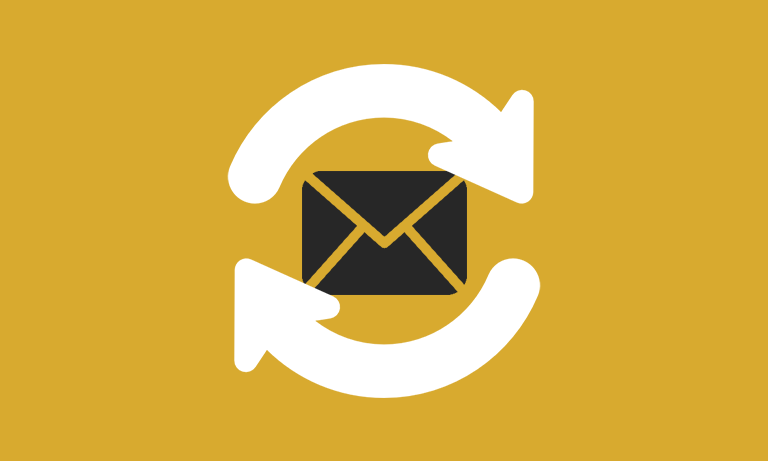Email, just like life, is both beautiful and complicated. Sent from one human to another, it can build relationships that last a lifetime. It’s a staple of every office and serves as a catalyst to driving progress.
Globally, the world sends 8.5 billion emails per day. And those figures are predicted to increase at a rate of 4.6% over the next 3 years reaching 257 billion emails a day by 2020.
Whether you’re sending out your next customer survey, community email, or simply a note to a colleague, there are a few ingredients for success. Unfortunately, in our pursuit of crafting that perfect email, the sign-off is often overlooked.
Just how important are email sign-offs? Based on a study published on FastCompany, the language people use to close their emails definitely has an effect on the email response rate. They looked at closings in over 350,000 email threads and found that certain closings deliver higher response rates.
But which sign-off came out tops? Before we reveal what it is, let’s look at some of the most popular email closings people use. Can you spot your favourite email sign-off?
- Sincerely
- Thanks
- Regards
- Cheers
- Warmly
- Talk soon
- Best
- Take care
- Ciao
- Chat soon
- Looking forward to your reply
- Your initials
- Thanks in advance
You can improve your email response rate by doing this simple thing.
So what is the best way to end your emails? The answer is gratitude. Emails that close with a variation of thank you got significantly higher responses than emails ending with other popular closings like “Cheers” and “Kind Regards”.

According to the study, emails that end in “Thanks in advance” actually receive the best results with an email response rate of 65.7%. Unfortunately, “Best” turned out to be the worst sign-off in the study. #dontlaugh
While saying thanks does wonders to your email response rate, did you know that different versions of thanks can perform differently? Believe it. Emails that end with “Thanks” receive a response rate of 57.9% but emails that finish with “Thank you” perform slightly better with a 63% response rate.
Overall, the study also found that sign-offs with at least some sort of expression of gratitude had 30% higher response rates than emails with neutral closings. #gratitudewins
The psychology behind saying thanks.
Saying thank you isn’t just good manners, it’s good business. In fact, saying thank you to your clients, particularly new ones, increases your business by 17%.
So what effect does gratitude have on the people who are thanked? Adam M. Grant and Francesco Gino conducted a study (Grant & Nino 2010) where participants were asked to provide feedback on a cover letter by a fictitious student called ‘Eric’.
After sending their feedback, the participants then received a second email from Eric asking for help with another cover letter. Half the participants received a thankful email from Eric, but the other half got a neutral reply sans an expression of gratitude.
The results? The neutral email only managed to get 32% of the participants to offer further help. But the letter which had “thanks so much” as the closing, received more than double the positive response. 66% said yes to helping Eric just because he said thank you.

Simple work communications: How experts end their emails.
Despite using positive words, popular sign‐offs, such as “best regards,” “regards,” and “kind regards,” had the lowest response rates. “Call me a curmudgeon but I hate “kind regards””, said John Grey, Editor in Chief at Department of Tourism, Major Events, Small Business and the Commonwealth Games. “It’s meaningless and, more often than not, hypocritical.”
Aliza Licht, author of the career guide “Leave Your Mark” said that while “Regards” is not her favourite sign-off, the abbreviated version — “Rgds” — is even worse. “It’s like you’re so busy you can’t even spell it.”
While we talk a lot about marketing emails, EDMs, and campaigns, it’s worth touching on the simple office email. Sent from one human to another, it can build relationships and friendships that last a lifetime.
Grey said, “Best way to end depends on the message and the recipient and your relation to each. Sometimes a “Thanks, JG” is good. Or maybe “Over to you – JG”. More detailed and effusive thanks might be better in other cases.”
If you’ll remember something, let it be this.
Your sign-off is just as important as your subject line. Thank them for what they’re about to do for you. By saying “Thank you in advance” you’re acknowledging the value of the time they are about to take, in making it happen for you. Because the time you give, you’ll never get back. It’s a simple sign of respect and gratitude.
Gratitude is more than just a social nicety. It makes people feel that you really value them and making customers feel appreciated should always be our top priority.
Now that you’re convinced of the power of gratitude, could you please help me share this story? Thanks in advance!



